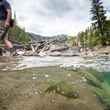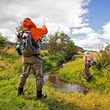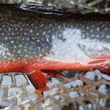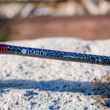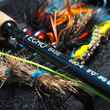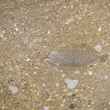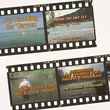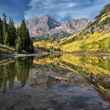I've only recently returned from an almost 3 week stint in Alaska, a trip which turned out quite differently than expected. This was due in part to inaccurate or ignorant assumptions on my behalf, but resulted mostly from a wholly unexpected, never before seen, record-breaking heat wave that set upon Alaska virtually the moment my plane touched ground in state. The result, during large stretches of the trip, was an out-of-the-ordinary sensory experience, a half duffel full of cold weather gear that never saw the light of day and a muted -- albeit still spectacular -- fishing experience.
One of the unexpected turns of the trip was in regards to my lustful anticipation of spending time in Alaska mousing. Before leaving for the trip, I wrote that I would "finally lay to rest my obsession with catching a big, fat rainbow on a skated mouse pattern", words which I very nearly ended up eating. And, truth be told, it would have most certainly been for lack of trying. Regardless of how long I've been doing this, and regardless of how many unreasonable expectations I've had dashed, I've yet to learn that there are no sure things in the world of fishing. This lesson likely applies to a world far beyond that of fishing, but assuming it does, I've yet to learn that too.



